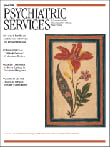On April 20, 1999, two adolescent boys named Eric Harris and Dylan Klebold forever changed the American public perception of adolescent violence. Seven years ago, Harris and Klebold murdered their classmates and teachers at Columbine High School. The public concern about violence committed by adolescents is evident in the media, in the scientific literature, and in the community. Research studies have attempted to elucidate the violent behavior of adolescents.
Violent Adolescents is edited by Lynn Greenwood, a psychotherapist with an interest in adolescents and adults who exhibit destructive behaviors. She teaches and writes on psychotherapy issues and has also acted as consultant psychotherapist for several television programs.
The central objective of Violent Adolescents is to provide an understanding of why adolescents can be violent. Violent Adolescents is a monograph in a series of books on forensic psychotherapy. Greenwood introduces five chapters by British colleagues. The book defines forensic psychotherapy as the use of psychoanalytically oriented "talking therapy" to treat patients who have committed violent offenses. It is suggested that serious adolescent violence is born from earlier disturbances often of a very specific nature. Chapter 2 examines the neurobiological features of aggression and discusses the circumstances of early developmental failures.
Chapters 1, 3, and 4 focus on the subject of childhood antecedents to violent behavior. These chapters are theoretical with little focus on treatment. The strongest chapters are about bullies and about working with adolescents who want to kill themselves. The chapter on bullies focuses on bullying in schools and draws on research from both developmental and organizational perspectives. The author provides a concise review of the literature and illustrates concepts with case studies. The chapter on adolescents who want to kill themselves includes a comprehensive review of the risk factors for suicide and the impact on practitioners.
The book has several weaknesses. Some of the treatment recommendations made by individual authors are vague and do not translate into direct care. For example, the chapter on self-destructive behavior suggests, "It is important for the adult professionals working with these individuals to remember that for the most part such behavior is symbolic of an underlying need to connect emotionally with an adult. By listening and taking time to unravel the emotional distress that underlies eating disorder and self-harm, adults who have responsibility for these young people can, on some level, begin to repair a fundamental process that had, for many reasons, not gone right with the original primary caregivers." The book is not comprehensive and fails to address gender and ethnic differences in adolescent violence, commorbid disorders associated with violence, the relationship between the media and adolescent violence, and homicidal adolescents.
Violent Adolescents will interest clinicians who are interested in a psychodynamic explanation of violent behavior among adolescents. This book is largely theoretical and does not provide a practical description of treatment.

